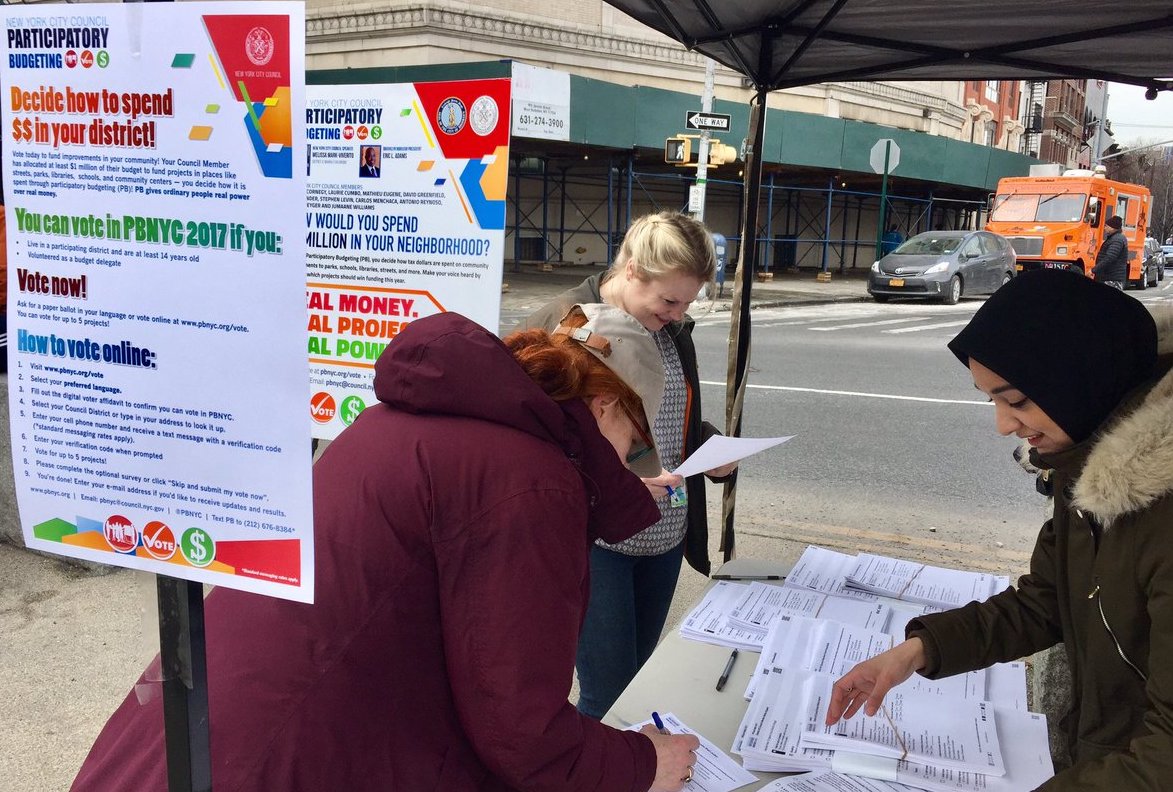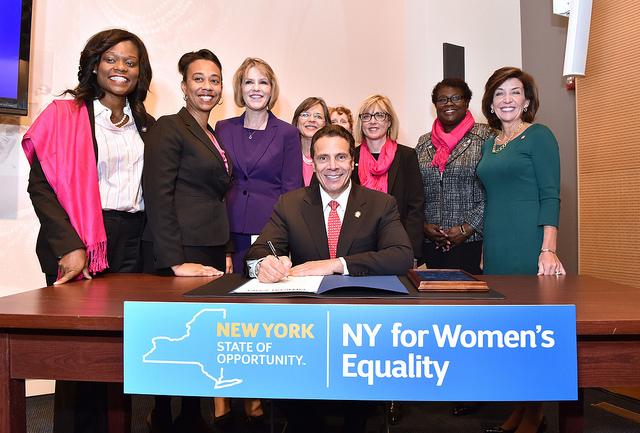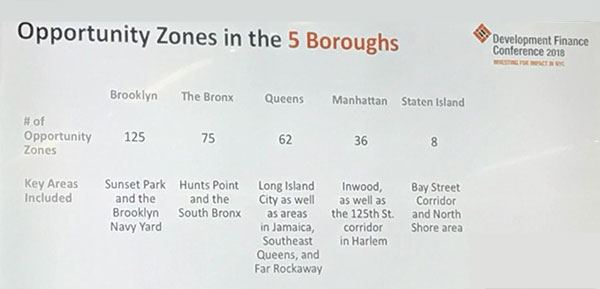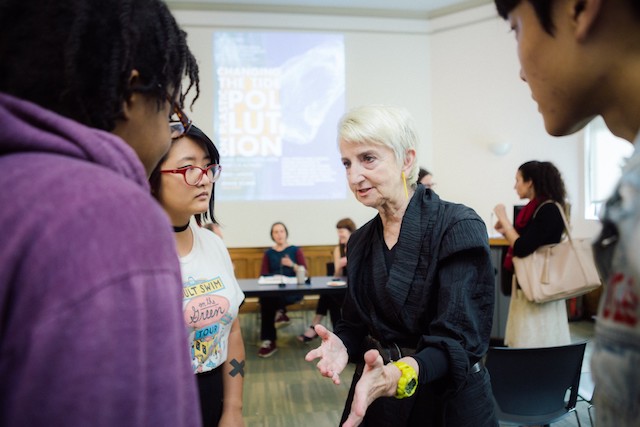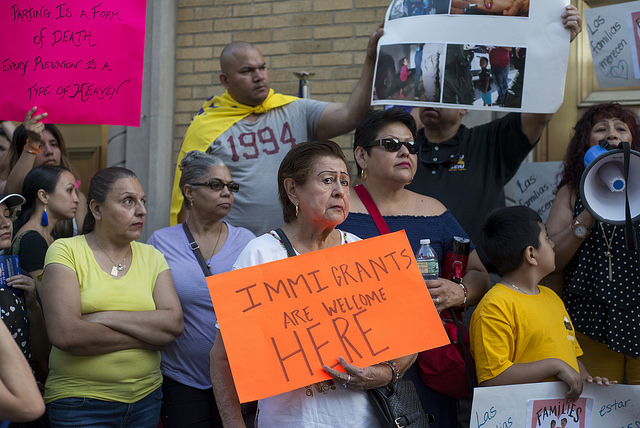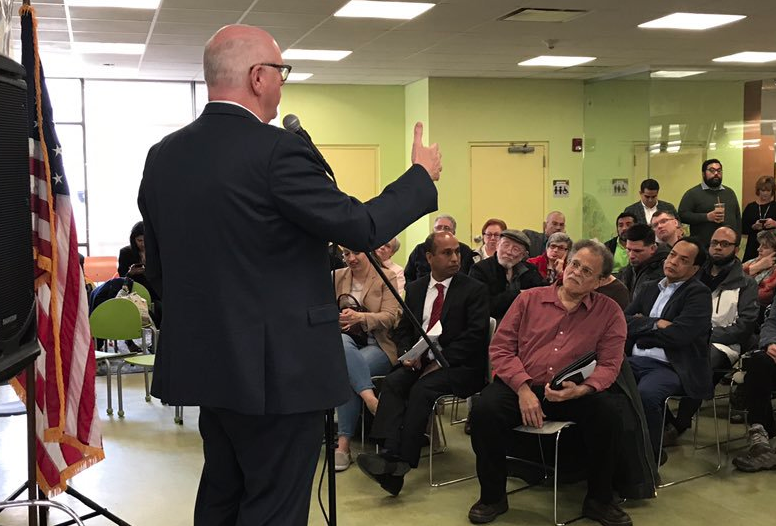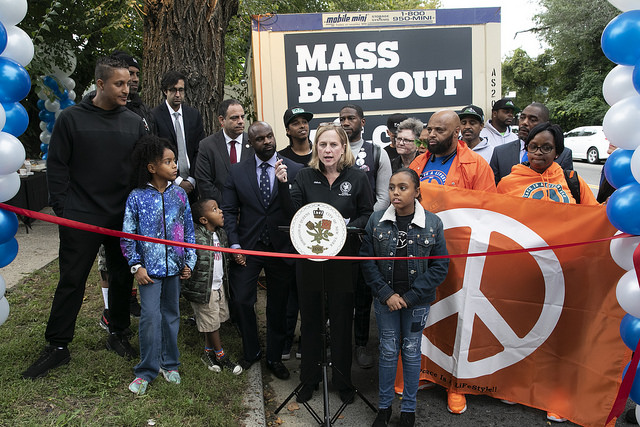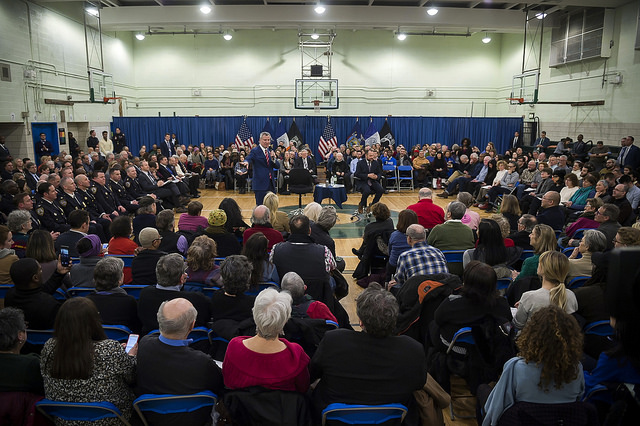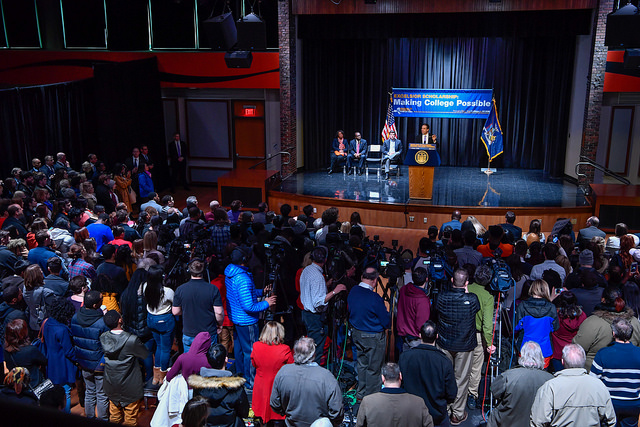
Gov. Cuomo celebrates Excelsior (photo via the Governor's Office)
The Excelsior Scholarship is a little over a year old, which makes it a good time to take stock. In October 2017 as the program launched, Governor Andrew Cuomo proclaimed, “Our first-in-the-nation Excelsior Scholarship is designed so more New Yorkers go to college tuition-free and receive the education they deserve to reach their full potential." Now that the program is in its third semester, we can explore the program’s freshman year experience to assess its impact, successes, and struggles. Who has benefited the most? Who hasn’t? And what elements need fixing?
The Inaugural Class
In Fall 2017, 20,086 students were awarded Excelsior scholarships and attended SUNY and CUNY colleges tuition-free.
Excelsior is a “last dollar” program, which means that awards are made only after accounting for other grant aid received, namely federal Pell grants and grants from the New York State Tuition Assistance Program (TAP).
Low-income SUNY and CUNY students typically receive enough aid from Pell and TAP to cover all or most of their tuition costs, so Excelsior funds have primarily gone to middle-class students, as designed by Gov. Cuomo. For the 2017-2018 academic year, the maximum family income threshold was $100,000, which increased to $110,000 for 2018-2019, and will rise to $125,000 for 2019-2020.
The creation of the Excelsior program brought much-needed relief to students and families caught in the middle-class college affordability squeeze, neither eligible for much financial aid nor easily able to pay the rising tuition and fee amounts at CUNY and SUNY.
Ghennah Forde, a junior at Brooklyn College, was one of Excelsior’s inaugural beneficiaries. During her freshman year, Ghennah and her parents, who identify as middle-class, struggled to pay Ghennah’s college expenses. Her mom’s salary from working in a hospital’s pathology lab and her father’s from working in a rehabilitation facility’s kitchen were too high for Ghennah to quality for Pell aid. After accounting for a TAP award of $500 per year, Ghennah had a tuition balance of approximately $6,000. “Financial aid was not on my side,” she says. When the Excelsior Scholarship award came through, she says, it was “such a blessing.”
Another Excelsior beneficiary, Ryan Walsh, received small amounts of Pell and TAP during his first two years as a commuter student at the State University of New York at Albany. When he began his freshman year, he had $16,000 in family savings for college-related expenses, but that money was mostly gone by the end of his sophomore year. Looking ahead to his junior year, Ryan saw looming a big tuition bill and car insurance and mobile phone charges. “Money was stressing me out a lot,” he says.
When Ryan’s dad heard about Cuomo’s proposal for the Excelsior Scholarship, it was a lifeline and a much-needed financial bailout. “Right when I ran out of money,” Ryan says, “the Excelsior Scholarship was announced.” Once Ryan got confirmation that Excelsior would cover his junior year tuition, he says, “I was so happy.” Receiving Excelsior eased his financial stresses. Now instead of panicking about money, Ryan worries about his upcoming graduation and breaking into the entertainment journalism industry.
Low-income students have gained little financially from Excelsior, yet the governor and others have made the argument that low-income students benefit from the program’s simple message that anyone, regardless of family income, can go to college for free. Excelsior may be motivating more students, including low-income students, to prepare for and enroll in college, though it’s impossible to know. For Fall 2018, CUNY’s freshman enrollment increased to 39,938 students from 38,162 in Fall 2017, a gain of 4.0%. CUNY officials attribute the increase to two factors, including Excelsior and also an initiative waiving CUNY’s $65 freshman application fee for public school students. The increase may be the result of these and/or any number of factors, including that some students may now be choosing CUNY who otherwise would have chosen private institutions. SUNY has not yet released Fall 2018 freshman enrollment numbers.
CUNY vs. SUNY
The 20,086 students who received Excelsior in Fall 2017 are a sizable group, yet they only represent 3.2% of the state’s total population of SUNY and CUNY students, which exceeds 630,000. Excelsior is barely a presence on some campuses. In Fall 2017, just 34 students received the grant at the 7,200-student CUNY Hostos Community College. Indeed, according to a report released in August 2018 by the Center for an Urban Future (CUF), a New York City-based policy think tank, only 0.8% of CUNY community college students received Excelsior.
The CUF report indicates that students who attend SUNY bachelor’s-granting institutions benefit at much higher rates. At these institutions, approximately 6.8% of all undergraduates received Excelsior in Fall 2017. At SUNY Albany, where Ryan attends, more than 8% of the in-state resident students received Excelsior.
The uneven distribution of Excelsior funds does not sit well with CUNY advocates. State Senator Liz Krueger, a Manhattan Democrat, says, “From the very beginning, I suspected that Excelsior wouldn’t prove as valuable for your average CUNY student as for SUNY full-time students.” At an August rally protesting Excelsior’s limitations, New York City Council Member and CUNY Hunter College alumnae Inez Barron declared, “Governor Cuomo is playing a shell game.”
The Heavy Credit Accumulation Requirement
Excelsior includes a controversial provision: students must earn 30 credits each year to receive and maintain the scholarship. This stipulation has effectively disqualified part-time students and students who are not on track to graduate within two years from associate degree programs and within four years from bachelor’s degrees programs. In a statement provided to Politico, Don Kaplan, a spokesperson for Governor Cuomo, defended the requirement as “incentivizing on-time graduation.”
The credit requirement has had stimulating effects on both Ghennah and Ryan. Ryan says, “I definitely have been more motivated. I want to make sure that I don’t lose the scholarship.”
Ghennah was well-aware of the 30-credit mandate when she applied for and accepted her Excelsior award. Feeling the pressure of Excelsior, she enrolled in and successfully completed 32 credits during her sophomore year. Now that she is a junior, she is on track to have 90-plus credits by the end of the current academic year and has planned out her courses on a color-coded spreadsheet so that she will graduate at the end of her fourth year, something only achieved by 27% of Brooklyn College students.
Yet Ghennah and Ryan are just two data points in a crowd of some 20,086 Excelsior recipients. To better understand whether Excelsior is bolstering credit accumulation and on-time completion at CUNY and SUNY colleges, the State’s Higher Education Services Corporation (HESC) should release detailed Excelsior data to the public and to researchers. Thus far, HESC has released only basic Excelsior data, and belatedly so. Information on the Fall 2017 beneficiaries was released in July 2018, and information on the Spring 2018 beneficiaries has not yet been released as of mid-October.
Implementation Woes
New public sector programs often encounter implementation road-bumps, yet Excelsior's first year was particularly rough.
HESC admittedly had especially tight time constraints. The Legislature voted in support of Excelsior in April 2017, just months before the start of the academic year. Only after the HESC Board met in May and approved of the program’s regulations could the agency issue the online application, which it did in early June, requiring submissions by late July. This meant that the official eligibility criteria and application procedures only had two months to filter down to CUNY and SUNY students, most of whom were off campus, and prospective students.
With a lack of clarity as to who was eligible, many students applied for Excelsior who neither needed nor were eligible for it. Of the 91,961 Excelsior applicants for Fall 2017, up to 28,362 did not need to complete the application, as they were already eligible for other grant aid to fully cover their tuition costs. Another 43,513 applicants were denied for failing to meet the eligibility criteria, with most of them—36,095—rejected because they did not meet the requirement of having earned 30 credits per year for each year of prior collegiate study.
Assembly Member Deborah Glick, a Manhattan Democrat and chair of the Assembly education committee, asked a Cuomo representative during a December 2017 hearing, "Did we do so much when it came to letting people know that the program existed but not enough in letting people know what the criteria was and raised false hopes?" Cuomo’s representative replied, “I don't think we did.”
One Excelsior requirement that has yet to be well-communicated requires recipients who complete less than 30 credits during a full academic year to pay back the second semester of their Excelsior aid. The main HESC Excelsior website buries this requirement in a long list of FAQs. Given that the “payback” requirement is non-intuitive and unprecedented in financial aid program design, one would expect that it would be featured more prominently on the website and in HESC communications.
In August 2018, at a HESC Board Meeting, Sarah Buell, a SUNY financial aid officer speaking as a member of the SUNY Financial Aid Professionals group, expressed the frustrations of the group when she said, “We have gone months without formal written guidance.” According to Buell, SUNY financial aid officers were struggling with how to answer basic questions from students and parents about Excelsior’s regulations and about HESC’s processing of applications.
The following day, SUNY Chancellor Kristina M. Johnson’s office sent a memo to campuses directing their financial aid officers not to speak with the media.
Denied Excelsior
Razieh Arabi is one of the students who applied for Excelsior aid and was denied. A 37-year-old single mother, Razieh applied for Excelsior as she was transferring to CUNY Baruch College after having completed an associate degree at CUNY Queensborough Community College (QCC) with a GPA of 3.93.
What happened? Because Razieh had taken three years to complete her Queensborough degree, having begun as a part-time student, and also because she had attended a proprietary college before Queensborough, she was deemed off-track and ineligible for Excelsior. When she received the denial letter, she says, “Despite all the hope the program provided, it felt like everything was falling apart for me.”
HESC’s regulations were explicit that the 30 credits per year requirement was retroactive, and the application asks detailed college history questions, yet Razieh says that she was not aware that her past enrollment history would disqualify her. When she applied, she thought that an accomplished student like herself was naturally eligible for the program. “If I’m not qualified, then who is qualified?” she asks. (Graduating in three years from Queensborough after beginning as a part-time student was a remarkable feat by Razieh given that QCC has a 22.6% three-year graduation rate for students who begin full-time.)
Since being denied Excelsior, Razieh has become an activist for reforms to the program. At the rally held in late August, at which Council Member Barron spoke, Razieh addressed the crowd. “Governor Cuomo should make critical reforms to the Excelsior Scholarship program,” she said. “If you are making a promise, then rise up to the challenge and don’t deliver just an empty promise.”
Razieh tells the story of her Excelsior denial with elements of tragedy, comedy, and anger. She had already felt wronged by the proprietary college sector that had wasted her time and money and by the federal financial aid formula that limited her aid while at Queensborough. Now she considered herself wronged by the retroactivity of a standard that she could have never known about, lacking the ability to see into the future, before Excelsior existed.
Excelsior’s Future
As more and more students get caught up in Excelsior’s complex rules, the program is being exposed as a complicated financial aid initiative, just like Pell and TAP, and it may come to be seen as punitive, too, due to the payback requirement. Though HESC has said that the payback stipulation will be waived for students who miss the 30-credit cutoff because of documented hardships, the guidance is limited on which hardship appeals will be accepted and which won’t. A death of a parent clearly qualifies for a successful appeal, but will a stressful relationship breakup combined with family problems and a terrible summer session chemistry class be enough for a student with 27 credits due to an F in that chemistry class to maintain the scholarship via an appeal? The guidance is not definitive.
Another requirement of Excelsior is that beneficiaries must stay in-state following graduation for the same number of years as they received the scholarship, lest their awards convert into loans. The requirement has been equated with indentured servitude. While both Ghennah and Ryan plan to stay in-state following graduation, other students will likely feel trapped.
Despite all its failures and flaws, few are calling for Excelsior to be rolled back. Instead, Excelsior has become established policy. Senator Krueger says, “It’s very rare that you create a program that can be taken advantage of by people who are above the poverty level. Those programs don’t get taken away.”
Advocates of expanding financial aid in New York State, like Tom Hilliard, who wrote the CUF report, say that Excelsior is the base from which incremental reforms can be made, reforms that make the promise of “free college” more real to more students. Hilliard has called for reducing the onerous 30-credit burden, eliminating its retroactivity provisions, and getting rid of the requirement that graduates remain in-state.
Senator Krueger says, “We need to amend and improve Excelsior. Full-time is an unrealistic ask, and we need to offer flexibility to students who can’t go full-time.”
Echoing Krueger, State Senator Luis Sepulveda, Bronx Democrat, adds, “Excelsior has to be tweaked so that it can help a larger body of students, especially those who also need to work.”
This fall, Sepulveda plans to introduce, with other Democratic colleagues, a bill to modify the 30-credit requirement. The bill may adopt TAP’s satisfactory academic progress standards, or, at a minimum, according to Sepulveda, it will authorize HESC to count developmental education course credits, which are typically non-credited, towards the 30-credit threshold.
Krueger and Sepulveda both consider the conversation about Excelsior to be part of a larger one about how to provide quality public higher education to state residents. Among other initiatives, Sepulveda calls for extending state financial aid to summer sessions, initiating a micro-grant program for emergency expenses, instituting a guided pathways system across CUNY and SUNY, and increasing base aid to colleges so that more sections of required courses can be offered. As Krueger says, “If we’re not putting more money into our universities, we’re actually risking the quality of the education that [Excelsior awardees] are getting.”
Both Krueger and Sepulveda say that after the November election—in which Democrats are poised to gain control of the State Senate—there will likely be enough votes to pass changes to Excelsior, and Sepulveda projects that the governor will support some reforms. “If this is something that the governor deems reasonable,” he said, “I believe that he will give it a hard look.” If Sepulveda is right, Excelsior’s junior year may well look different from its freshman and sophomore years.
***
Eric Neutuch is a freelance journalist.
***
Have an op-ed idea or submission for Gotham Gazette? Email This email address is being protected from spambots. You need JavaScript enabled to view it.
